We sincerely hope that each of you, our readers, will enjoy and appreciate this article we present about these 4 Incredible African Insects. It was certainly our pleasure to compile the information for you. May it provide you with both education and increased awareness.
These few species listed herein represent only a portion of the natural wonders found throughout the world, though. Yet, it’s our belief that they serve as excellent representations of the wonders found here. Check out some of our other articles for similar marvels.
Spiny Mantis
Spiny Flower Mantis Facts
- We start this article about these 4 Incredible African Insects with the remarkable invertebrate knoan as the Spiny Flower Mantis.
- As is easy to see, the descriptive term we’ve chosen to use here forms the generally accepted common name of a most unusual species of mantis. Its much less pronounceable scientific name remains that of the Pseudocreobotra wahlbergii.
- But, regardless of which term one employs to refer to this magnificent creature, it remains a truly impressive variety of invertebrate. In addition, although all mantises are masters of camouflage, this species takes that to another level.
- Distinctly, mature adults of the species, along with their adaptive coloring, actually possess numerous spines. These distinctive appendages appear like a tree branch, thus serving as the source of the common name, along their sides.
- Further, newborn nymphs of the creature actually look nothing like a mantis at all. In point of fact, these closely resemble small, black ants. Quite fortunately, for the moment, its population in the wild appears to be stable and sufficient.
- This holds true throughout its natural range. The IUCN therefore has no listing for the Spiny Flower Mantis. But, it should be considered to be at potential risk, at the least. This holds true due to the ongoing effects of habit loss and climate change.
Spiny Flower Mantis Physical Description
Quite notably, the Spiny Flower Mantis does impress those who encounter it. Yet, the invertebrate doesn’t do so based on sheer physical size. That’s because this tiny insect, although truly quite remarkable in other ways, ranks as smaller than many related species.
But, while it may not share their size, it does share one trait in common with its relatives. That’s the unmistakable fact that it does obviously display the physiological characteristic of sexual dimorphism. In its case, this trait does not simply manifest itself in terms of size.
Both genders of the arthropod attain an average adult size measuring about 1.5 in (3.8 cm) in total length. Further, the coloring, though quite variable, usually includes a green background. Nonetheless, it can present other shades, such as pink, red, and yellow.
But, it also presents a prominent eye spot on the forewing. This shows black, green, and cream. The gender-based differences in the Spiny Flower Mantis also manifests in terms of the spines it has. Only females of the species display the spines for which it remains known.
- Kingdom: Animalia
- Phylum: Arthropoda
- Class: Insecta
- Order: Mantodea
- Family: Hymenopodidae
- Genus: Pseudocreobotra
- Species: P. wahlbergi
Spiny Flower Mantis Distribution, Habitat, and Ecology
Quite fortunately for it, the supremely astonishing Spiny Flower Mantis evolved as native to a comparatively broad section of the world. In point of fact, to the surprise of some people, it evolved as endemic to the great majority of the continent of Africa.
More specifically, though, the native range of the insect consists of the region best known as sub-Saharan Africa. Further, within that already extensive area, this highly resourceful arthropod inhabits a great many different types of environment.
These areas of habitation nevertheless all have one thing in common. That’s the fact that the amazing species requires relatively high humidity levels. As a result, within its overall territory, it inhabits almost any area with sufficient humidity.
But, the beautiful Spiny Flower Mantis does show a highly marked preference for areas with extremely abundant foliage, including a large number of flowering plants. This type of region also quite frequently includes areas of jungle.
It further prefers such habitats because the conditions provide both concealment and abundant prey. Like all mantises, this particular arthropod evolved as a predatory carnivore. Its preferred prey consists of various flying insects, and spiders.
Nonetheless, if these remain unavailable, it will consume virtually any insect it can catch. Finally, again like others of its kind, this marvel of Nature displays cannibalistic tendencies after mating. This remains one of the most amazing traits of all mantises.
Green Milkweed Grasshopper
Green Milkweed Grasshopper Facts
- Next up in this compilation of 4 Incredible African Insects comes the remarkable animal holding the name of Green Milkweed Grasshopper.
- This brilliantly colored insect bears the descriptive and informative common name due to its nature and appearance. That’s not the only common term for the remarkable invertebrate, though. In point of fact, it has at least two alternate names.
- That’s because it’s also known to some as the African bush grasshopper, and the Green Stinkweed Locust. Professional researchers, meanwhile, know it by its scientific name. That’s the exceedingly hard to pronounce term of Phymateus viridipes.
- Regardless of which term one uses to refer to the insect, though, one thing stands out. That’s the fact that, like all locusts, it’s considered by some people to be a pest in some regions of the world. It sometimes damages crops ornamental plants.
- The Swedish entomologist Carl Stål gave it the technical name that it holds. That occurred when this researcher made the first official recognition of the creature. He made the original acknowledgement of it as a separate and distinct species in 1873.
- Like the great majority of its kindred, the Green Milkweed Grasshopper appears to be maintaining a sizeable population base. This further seems to hold true throughout the entirety of its natural range. The IUCN, therefore, has no listing for on its Red List.
- Although a large percentage of insects face serious threats, for the moment, it does not. Its tendency to reproduce in vast numbers provides it with some protection from the dangers now facing most species. Those consist of habitat loss and climate change.
Green Milkweed Grasshopper Physical Description
The fabulous Green Milkweed Grasshopper merits appreciation for more than just its physical appearance. This trait nonetheless also deserves its own share of admiration, though. Nevertheless, this insect is also an above-average sized variety of locust.
But the amazing traits of the arthropod do not stop there. That’s because, like many of its relatives, it displays a moderately strong degree of the physiological trait of sexual dimorphism. In its case, this characteristic manifests itself in terms of sheer physical size.
More precisely, the female typically attains a significantly greater body size than that of her male counterpart. Although the males remain smaller, females reach an average body length of 2.8 in (7 cm). The body of the insect itself develops as moderately stout.
Quite interestingly, the region immediately behind the head evolved a unique characteristic. That’s the presence of a grouping of small, protruding spines. Even more impressively, these generally develop with a bright red tip, making for a visually striking image.
Most of the body of the Green Milkweed Grasshopper, however, displays the namesake green shade. This also extends to the forewings of the invertebrate. The hindwings, though, display a far different pattern. These show a vivid blue and red combination.
- Kingdom: Animalia
- Phylum: Arthropoda
- Class: Insecta
- Order: Orthoptera
- Family: Pyrgomorphidae
- Genus: Phymateus
- Species: P. viridipes
Green Milkweed Grasshopper Distribution, Habitat, and Ecology
The usually unwelcome but nonetheless impressive Green Milkweed Grasshopper inhabits a moderately large section of the globe. That’s because it evolved as endemic to the continent of Africa. Sadly, though, the arthropod doesn’t appear in all areas of the region.
More precisely, the amazing invertebrate only seems to inhabit the southern regions of the continent. Within that range, however, it makes its presence known in every country. When it swarms, however, these groupings sometimes move beyond that usual area.
This remarkable work of evolution further displays a very strong versatility in its choice of habitats. Most individuals and groups appear in various regions of grassland. Individuals and smaller groupings also sometimes appear in cultivated regions such as gardens.
Within its native range, the arthropod frequently engages in extremely long migratory flights. These flights, however, usually occur at somewhat lower altitudes. During its periods of swarming activity, though, these swarms generally fly at significant altitudes.
The Green Milkweed Grasshopper also typically feeds opportunistically, like its many relatives. Though this can include crops and garden species, it mainly feeds on plants in the Stinkweed Family. At this time, it also often groups together on trees in large numbers.
Its prevalence for feeding on species in the Stinkweed Family provide it with an added benefit. Like all grasshoppers, it emits a noxious foam as a means of defense against predators. Due to its consumption of Stinkweed, however, its foam has a toxic nature.
African Monarch
African Monarch Facts
- The third species appearing in this gathering of 4 Incredible African Insects, the African Monarch, places there only due to random selection.
- This magnificent Lepidoptera most frequently goes by the descriptive, as well as somewhat informative, common name across its range. Yet, it also has several alternate names. These include the African queen, and, surprisingly, the plain tiger.
- Scientific professionals, however, such as researchers, typically refer to the invertebrate by its official name. That’s somewhat difficult to pronounce, though, for non-professionals. That’s because it bears the technical moniker of Danaus chrysippus.
- It further received that name due to the efforts of the renowned Swedish researcher, Carl Linnaeus. He accomplished the first formal recognition of the insect as a separate and distinct species. This scientifically noteworthy event occurred in the year 1758.
- Regardless of the term one chooses to use when referring to it, though, it’s a remarkable beauty. A total of three known subspecies also exist. Intriguingly, these share the same range of habitation. It’s truly a marvelous work of Nature and evolution.
- The stunning African Monarch also stands out for another reason. That’s because, unlike many species, it appears to be maintaining a population base that’s both sizeable and stable. This trend further seems to hold true throughout the entirety of its range.
- The IUCN, therefore, presently lists the Arthropod as Least Concern on its Red List. The creature nevertheless faces potential threats to its existence. Habitat loss due to human expansion qualifies as one. Its greatest danger, though, is likely climate change.
African Monarch Physical Description
The remarkable African Monarch impresses those who encounter it with its attributes. Sheer physical size, however, isn’t among the qualities on that particular list. That’s due to the fact that, regardless of its other notable aspects, it ranks as a medium-sized butterfly.
Mature adults attain an average wingspan measuring between 2.8 – 3.1 in (7 – 8 cm). Like many Arthropods, it also displays a slight degree of the physiological characteristic of sexual dimorphism. In its case, though, this trait does not manifest in terms of sheer size.
Males of this insect develop pronounced scent glands, which the female lacks entirely. With the exception of this physical structure, the genders appear virtually indistinguishable. The bodies of both genders also display a basic black shade, with many white spots.
The difference in overall appearance is further augmented, though, by the exact patterns of color. That’s due to the fact that precise combinations vary between individuals, sometimes quite significantly. Certain basic patterns of coloration do remain, however.
Both the upper and lower wings of the African Monarch display a predominantly bright orange hue. On the upperside, the tips of the forewing manifest a black border. White spots also appear there. The hindwing displays the black border, but without the spots.
The underside of the wings also presents a principally orange shade. Here, though, it’s a somewhat lighter shade. The same black border appears, but both wings also have white spots there. The hindwing also presents three small black spots around a central wing cell.
- Kingdom: Animalia
- Phylum: Arthropoda
- Class: Insecta
- Order: Lepidoptera
- Family: Nymphalidae
- Genus: Danaus
- Species: D. chrysippus
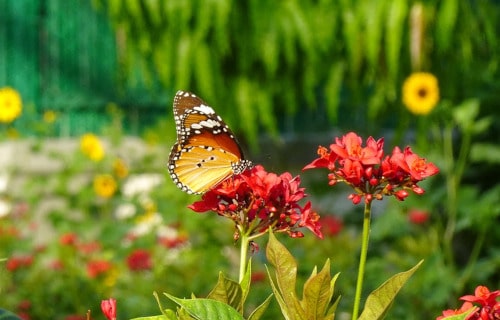
African Monarch Distribution, Habitat, and Ecology
Fortunately, for those who appreciate Nature, the dazzling African Monarch apparently evolved as native to a relatively broad swathe of the globe. As the common name itself clearly indicates, this zone of habitation includes virtually the entire continent of Africa.
Its presence isn’t restricted solely to that region of the world, however. That’s because it also appears in an impressive array of other areas. This includes much of Asia, including all of the Indian subcontinent. The insect also appears in Australia, and some Pacific islands!
It further enhances its survival capability by displaying an impressive adaptability in regards to its precise habitat. It does nonetheless demonstrate a preference for one specific type of habitat. The intrepid insect demonstrates a strong fondness for arid, open areas.
Yet, due to its flexibility in terms of where it lives, it also makes appearances in a wide varity of habitats. These include such areas as mountains, deciduous forests, and even deserts and gardens. It seems comfortable at altitudes ranging from sea level to 4,900 ft (1,494 m).
As often happens in Nature, the delicate beauty of the African Monarch conceals a rather surprising secret. Despite its physical fragility, it has few natural predators. That’s due to the fact that its tiny body contains high levels of toxic compounds, called cardenolides.
These originate with its diet. The adults consume nectar from various local flowering plants. The larval form, however, feeds mainly on several plants, but most especially Milkweed. The toxins then accumulate in its body, making it unpalatable to most predators.
Army Green Moth
Army Green Moth Facts
- Closing out this compendium of 4 Incredible African Insects we give you the visually distinctive animal known as the Army Green Moth.
- This magnificent creation of Nature and evolution frequently goes by the descriptive moniker applied to it herein. That’s hardly the only term by which it’s known, though. It’s also referred to by the common name of the Oleander hawk-moth.
- Professionals, however, typically know it by yet another name. Thankfully, that’s a relatively simple term as such things go. That’s because in scientific circles it’s better known by its formal name of the Daphnis nerii. By either name, it’s a beautiful species.
- It further owes that specific technical name to the eminent Swedish botanist and zoologist Carl Linnaeus. That highly respected researcher recorded the first formal acknowledgement of the Arthropod as a separate and distinct species in the year 1758.
- The insect made its first appearance in scientific literature following that work. The renowned researcher included the newly recognized species in the 10th edition of his Systema Naturae. That appearance occurred in the same year as its acknowledgement.
- Most fortunately, the amazing Army Green Moth seems to be maintaining a population base that’s both stable and sizeable. In that respect it’s more fortunate than many of its relatives. The IUCN therefore currently has no listing for the creature on its Red List.
- The beautiful Lepidoptera nevertheless does face several potential threats to its own continued existence. These naturally include habitat loss due to human expansion. The wonder of Nature likely faces its greatest threat, however, in the form of climate change.
Army Green Moth Physical Description
The aptly-named Army Green Moth fully merits the degree of attention it receives from those lucky enough to encounter it. Although size is irrelevant to such things, it nonetheless impresses in that respect as well. That’s true since it’s far larger than many of its cousins.
It additionally distinguishes itself from the great majority of Lepidoptera in a surprising way. That’s because of something it does not display. That’s due to the fact that, unlike most moths and butterflies, it shows no noticeable degree of the trait of sexual dimorphism.
Individuals of both genders therefore manifest the same physical characteristics, including simple physical size. Remarkably, this insect attains a significant wingspan. Though this aspect varies between individuals, regardless of gender, it ranges from 3.5 – 5.1 in (9 – 13 cm).
Precise color patterns also vary from specimen to specimen, of course. Overall, however, this typically consists of a mosaic of olive and dark green backgrounds. Lighter cream colored streaks also run through the surface of the wings, and even such shades as violet.
Mature adult individuals, meanwhile, display a greenish head, with reddish-brown on the front and a grayish band on the reverse. The thorax also displays a green hue, with the collar outlined in gray. Distinctly, it also has a triangular gray patch present on the body’s top.
The abdomen of the Army Green Moth generally manifests a paler shade of green. Its forewings stand out due to a combined dark green background with both a black spot and a white patch at the base. The hindwings, though, usually appear somewhat darker in color.
- Kingdom: Animalia
- Phylum: Arthropoda
- Class: Insecta
- Order: Lepidoptera
- Family: Sphingidae
- Genus: Daphnis
- Species: D. nerii
Army Green Moth Distribution, Habitat, and Ecology
Fortunately, the fabulous Army Green Moth evolved as native to a remarkable broad swathe of the globe. It also tends to migrate significant distances, which places it in other parts of the world, as well. The natural marvel mainly appears natively across Africa and Asia.
From this home range, the intrepid Arthropod engages in regular migrations that take it to many connecting regions. This includes the southern and eastern portions of Europe in the summer. Individuals sometimes even travel as far to the north as parts of Scotland.
Probably due to actions of man, the invertebrate has also become naturalized to Hawaii, in the United States. In all the regions it appears, it displays marked habitat preferences. This holds true for both its primary and migratory range, as well as naturalized regions.
Given those areas of the globe, its preferences come as no surprise. Individuals make their home in warm relatively moist regions. Though not limited to, it often frequents areas of scrublands and highlands. In Hawaii, the Lepidoptera quickly adapted to tropical areas, too.
Like many of its relatives, this product of ages of evolution prefers regions with copious foliage. This instinctive tendency serves several purposes in its life cycle. These understandably include natural shelter as well food for the larval form of the insect.
That’s due to the fact that if further follows the pattern of its genetic cousins. The adults principally feed on the nectar of a wide variety of flowers, which such a habitat provides. Most nevertheless display a strong preference for honeysuckle, jasmine, and petunias.
The caterpillar form of the Army Green Moth, however, distinguishes itself. This holds true because of its diet. As its alternate common name implies, this form mainly consumes the oleander plant. Though highly toxic to most species, these caterpillars are immune.

4 Incredible African Insects
We hope that each of you enjoyed reading, and hopefully learning from, this article we’ve written about these 4 Incredible African Insects. It’s also our hope that doing so has left you with either a new or renewed appreciation for such wonders of Nature.
Unfortunately, however, many of their kindred around the world now find themselves facing strong threats to their continued existence as a species. Many of those dangers, in fact, stem from the actions of mankind. We must do all we can to protect and preserve them all.
Check out our other articles on 5 Herbaecous Plants of Georgia, Wonderful Wild Cats of the World, 4 Supremely Stunning Squirrels, Earth’s Many Stunning Waterfalls
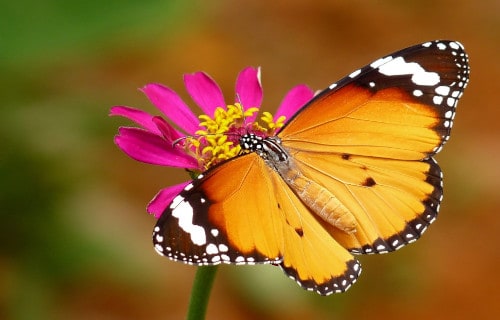
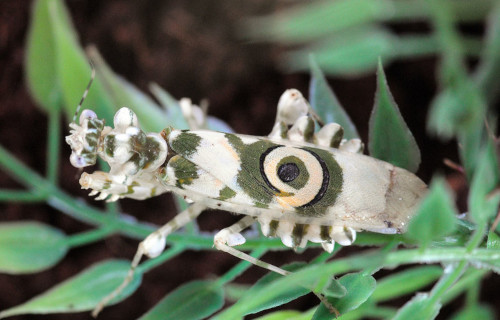
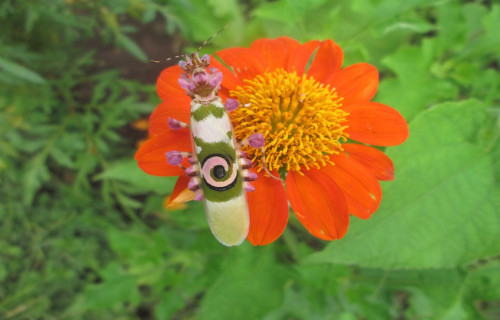
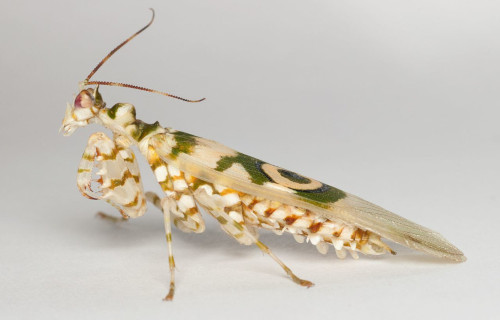
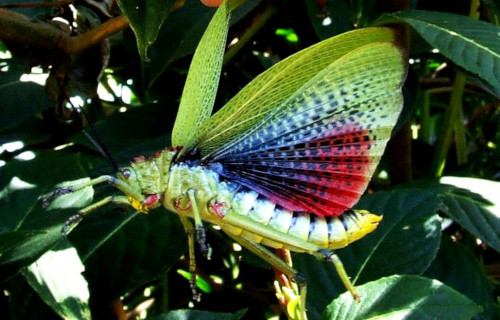
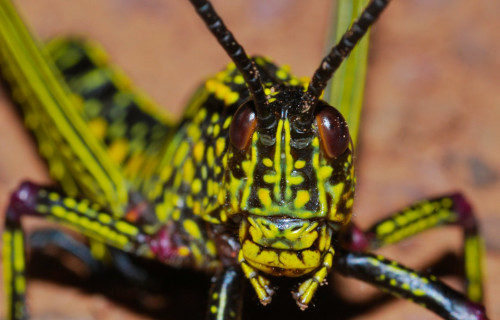
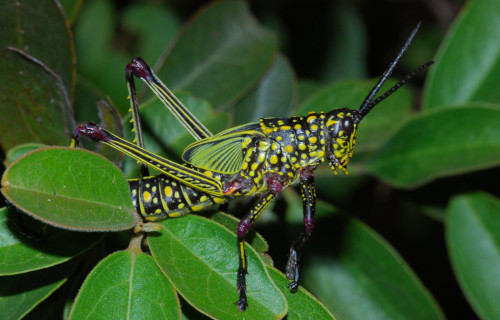
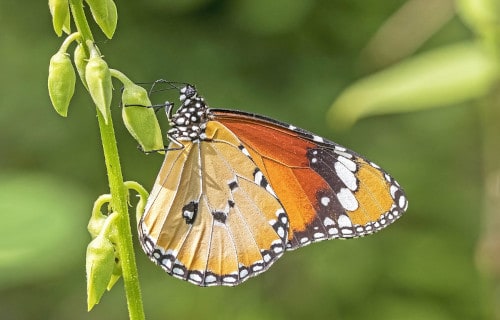
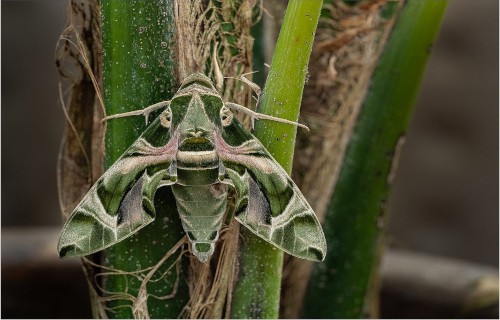
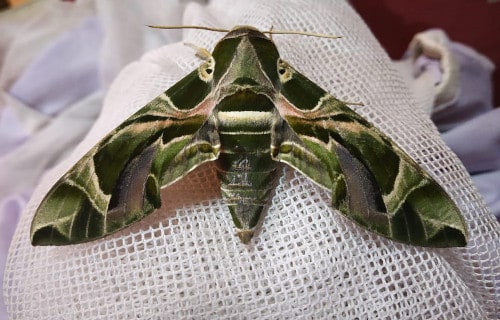
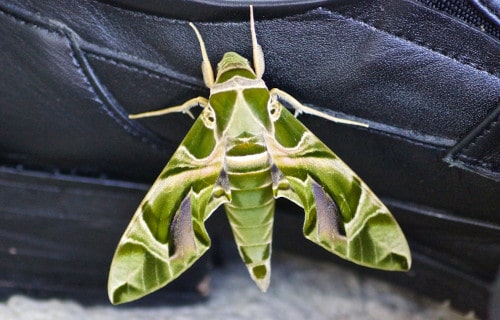









Leave a Reply